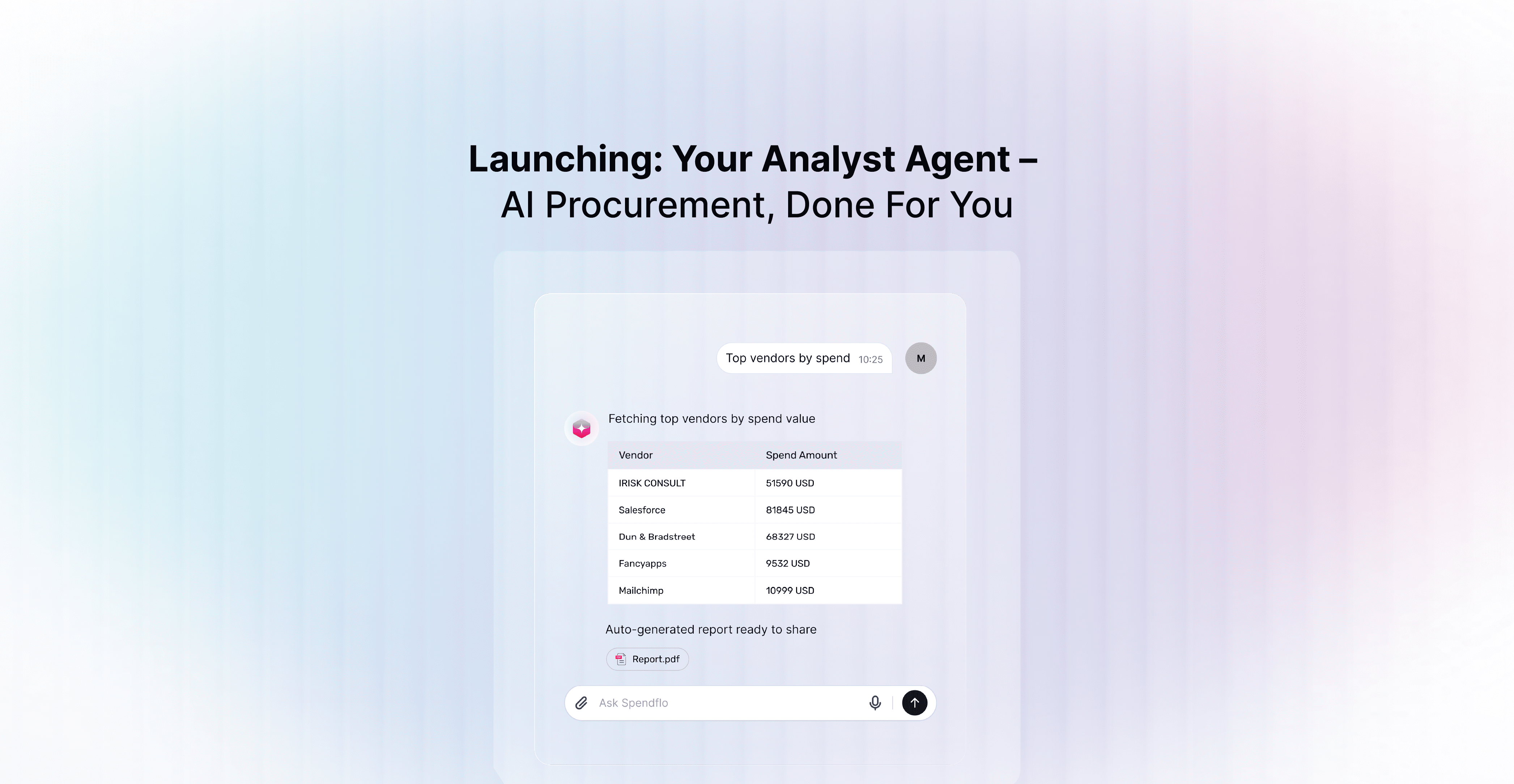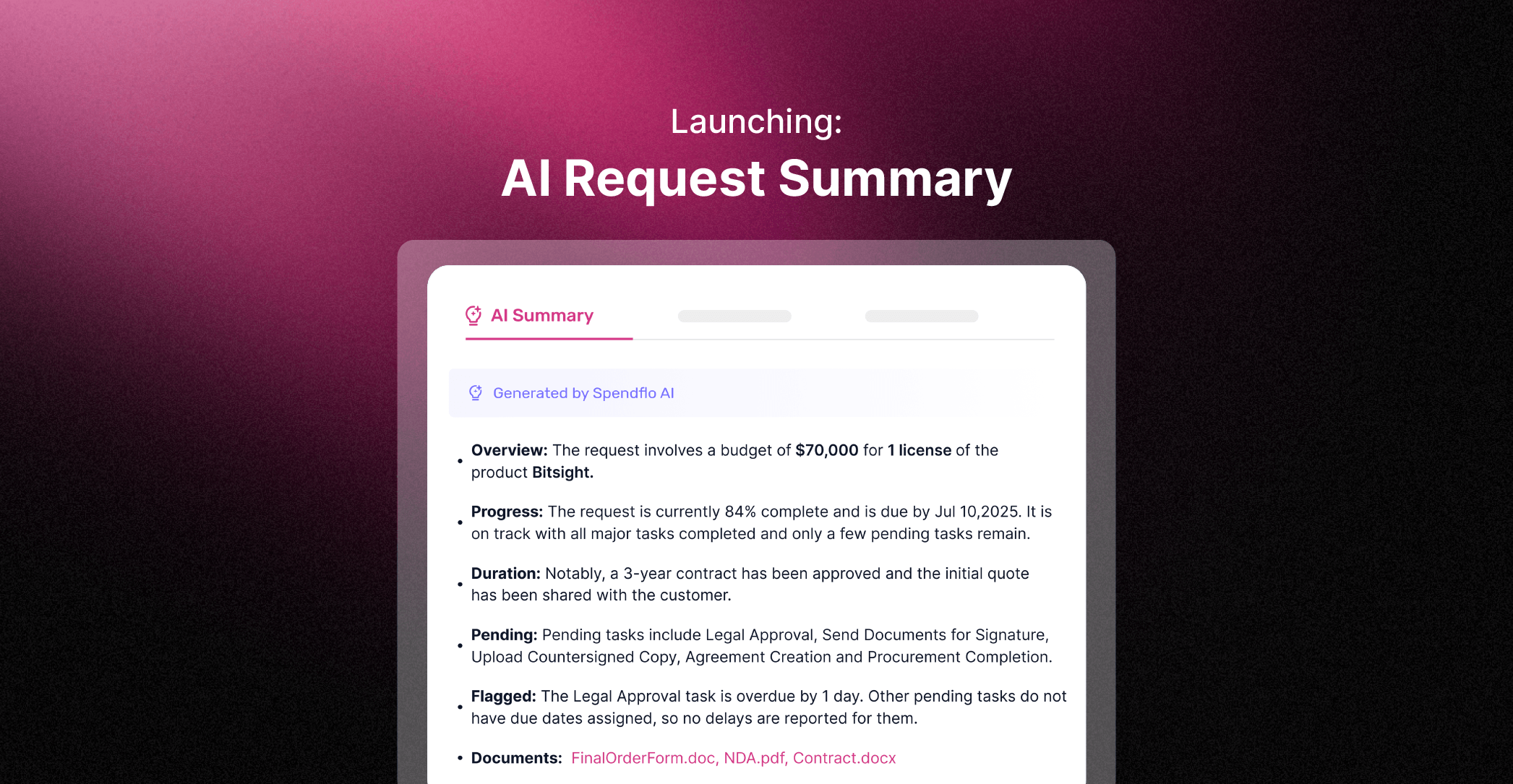

Maximizing Your SaaS Budget: Usage and spend data insights on a silver platter

Maximizing Your SaaS Budget: Usage and spend data insights on a silver platter
With powerful integrations and regular audits, Spendflo helps optimize SaaS budgets, and promote a cost-conscious culture within your organization. Get started.



Each employee uses at least a dozen tools to get their work done every day. Each team requires a growing, unique stack of tools to remain competitive. This heavy dependence on SaaS comes with its own pros and cons. The pro is, of course, that work gets streamlined, and you get better results.
The con? As the number of SaaS solutions in use grows, so do the associated costs. That sounds reasonable—But the real challenge with more SaaS is tracking and managing the associated costs effectively. SaaS budgets often become arbitrary numbers, and they stay that way in companies because of:
- Low visibility into usage patterns - Without clear insight into what tools are being used how often, and by whom, spending becomes a blind process.
- Redundant subscriptions - Multiple teams may unwittingly subscribe to similar tools, leading to unnecessary duplication of costs.
- Decentralized procurement - Procurement decisions made at various levels of the organization can further complicate cost management.
- Uncontrolled spending - Teams are often unaware, or unable to track, their actual SaaS spends vs. the budget allocated to them, leading to uncontrolled spending.
These problems all lead to SaaS wastage and budget overruns. The need of the hour is accurate usage and spend data to identify the areas of optimization at a department and user-level.
Making Budget Overruns a Myth - The Spendflo Effect
Spendflo’s Users and Teams insights is a treasure trove of data that will help you visualize, monitor, and allocate SaaS spending accurately, and effectively. Here’s how:
Department-wise, custom allocation of costs incurred
Budgeting for SaaS gets complicated because multiple teams end up using the same tool with varying criticality. With Spendflo’s usage-based insights, you can see which teams use which apps, and how often.

Based on these insights, you can choose custom cost allocation approaches such as:
Access-based allocation: For example, if a tool like Tableau is used primarily by the Finance team, along with a couple of engineers, the cost of the tool can be allocated based on the number of people accessing it from each department, leading to much more accurate, and fair cost allocation.
Headcount-based allocation: As an alternative to access/user-based cost allocation, you can choose the headcount-based allocation. This is useful for general-purpose software like MS Office. The cost of the tool can be split evenly between the teams that use it, regardless of the actual usage.
Manual allocation: For unique situations in which either of these methods can’t apply, companies can manually allocate costs for different tools.
How does Spendflo give you such granular data?
Every single team in your company, how many tools they use, which tools are they, how much is that costing you, which employees from those teams are using the most tools, what is the usage level—All the questions that plague budget inaccuracies answered on one single platform: Spendflo.
So it’s natural to wonder how this is possible. Through powerful integrations, Spendflo pulls all the SaaS-related data and presents it to you in a more consumable, and actionable way.

You can integrate Spendflo with your:
- HRMS systems such as BambooHR
- Finance systems like Netsuite or Quickbooks
- SSOs like Google Workspace, Jumpcloud, Okta, and more
In addition to these integrations, you can also import the information via CSV files, or through manual entry as well.
To ensure maximum efficiency, invite your employees to Spendflo so you have your employee records updated and accessible. This way, when an employee leaves the organization, you can identify and onboard their replacement to Spendflo, providing access to all the tools they need ensuring that your existing workflows are not interrupted.
Some more ways to optimize your SaaS budget
Apart from drill-down usage and user-based data, Spendflo helps you adopt several more strategies. Here are some key approaches:
- Perform regular audits: The procurement experts at Spendflo conduct regular audits of all active SaaS subscriptions to identify and report unused or underused licenses. By eliminating unnecessary subscriptions, you can minimize costs and reallocate funds to more critical areas.
- Negotiate contracts: Armed with decades of procurement expertise and accurate usage and spend data, Spendflo, on your behalf, enters into negotiations with SaaS vendors to optimize pricing models, negotiate volume discounts, or explore alternative licensing options that better fit your requirements.
- Consolidate redundant tools: Spendflo’s cost-avoidance strategy also helps you identify redundant tools with overlapping features. You can choose to consolidate them into a single solution. This not only reduces costs but also simplifies SaaS management.
- Create an environment of cost-mindfulness: Spendflo helps create awareness among your employees about the importance of optimizing SaaS budgets to foster a cost-conscious culture within the organization.
Accurate usage and spend data lay the foundation for effective SaaS budget optimization. Spendflo helps you leverage this data to identify potential cost-saving opportunities, eliminate redundant subscriptions, negotiate favorable contracts, and optimize your overall SaaS budget. With a well-planned strategy and continuous monitoring, businesses like yours can strike a balance between utilizing powerful SaaS solutions and maintaining cost-effectiveness. Begin your budget optimization journey today. Check out Spendflo for free!















.png)



.png)






.avif)





